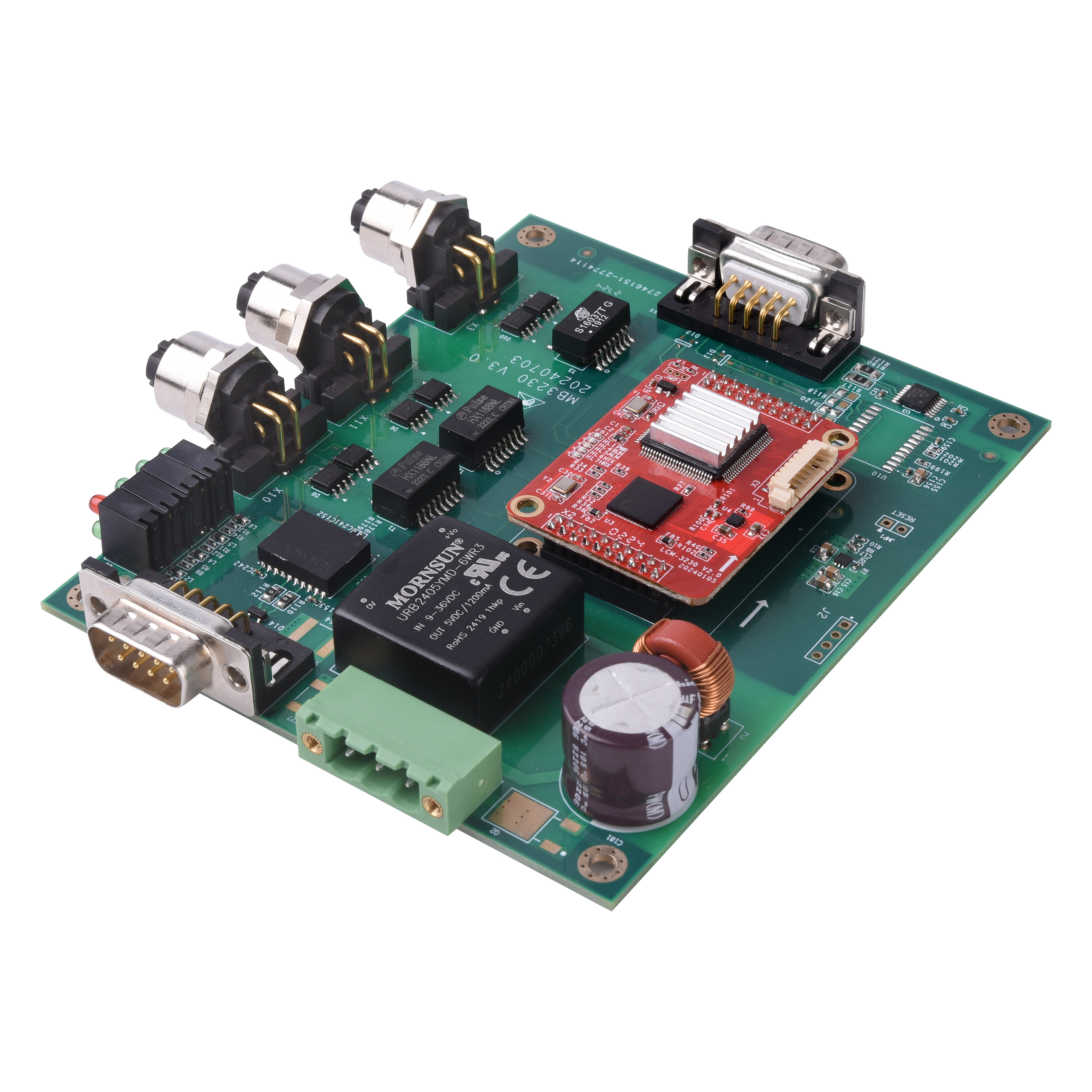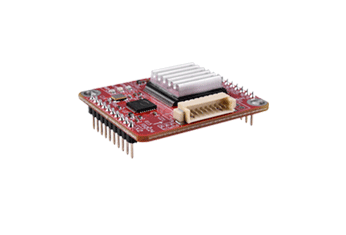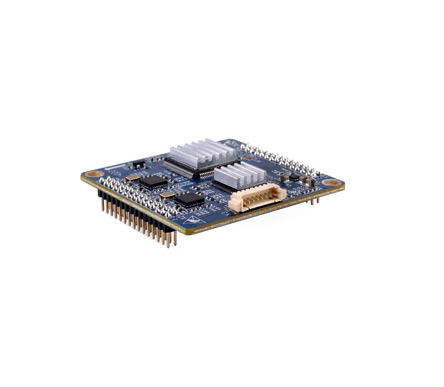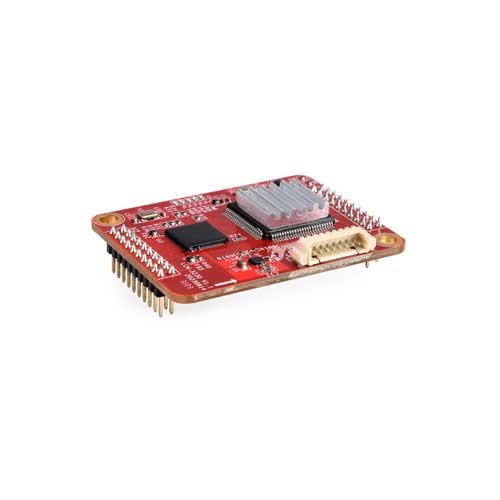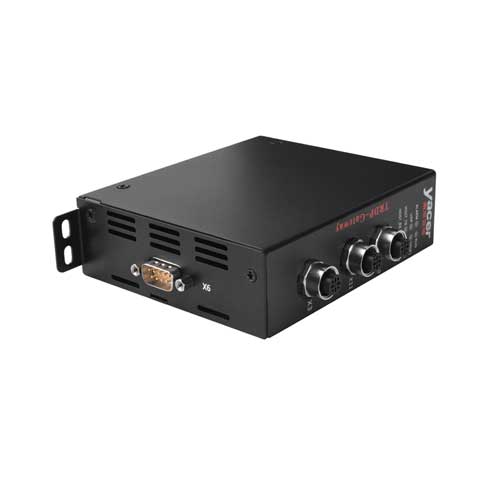I. The Era Background and Industry Pain Points of Technical Integration
In the wave of intelligent upgrading of rail transit, the technical architecture of traditional train Door Control Units (DCUs) relying on hardwired connections or low-speed buses (such as MVB) has struggled to meet the precise control requirements in high-density passenger flow scenarios:
• Cost bottleneck: Wiring costs in traditional solutions account for more than 20% of the total cost of the door system, and equipment scalability is poor.
• Efficiency shortcoming: Data transmission delay exceeds 50ms, and network congestion is prone to occur in concurrent control of multiple doors.
• Policy drive: For example, China's Urban Rail Transit Fully Automatic Operation System Specification explicitly includes the TRDP protocol in the recommended standards, accelerating technological iteration.
As a real-time communication protocol based on the IEC 61375-2-3 standard, the TRDP protocol is specially designed for high-vibration and strong electromagnetic environments, with three core advantages: ✅ microsecond-level real-time performance ✅ industrial-grade reliability ✅ standardized compatibility.
Its integration with DCUs is promoting the transition of train control from "standalone operation" to "intelligent collaboration" — according to industry forecasts, the global smart door system market size will exceed $5 billion by 2025, and the TRDP technology penetration rate is expected to exceed 30%.
II. Technical Breakthroughs: Comprehensive Innovation from Communication Efficiency to System Architecture
1 Revolutionary Improvement in Real-time Communication Efficiency
The TRDP protocol reshapes the communication architecture through two core technologies:
• Priority scheduling + time synchronization: Control instruction transmission delay is compressed to within 100μs, supporting 1ms-level periodic data upload.
• Hierarchical bandwidth design: A combination of 10Gbps internal interfaces + 1000Mbps vehicle networking interfaces increases the transmission rate to 5 times that of traditional solutions, completely solving the congestion problem in multi-door control.
2 Dual Upgrades in System Reliability and Security
|
Technical Indicators
|
Traditional Solutions
|
TRDP Integration Solution
|
|
Network Packet Loss Tolerance
|
≤1%
|
≤5% (data integrity)
|
|
Mean Time Between Failures(MTBF)
|
100,000 hours
|
>150,000 hours
|
|
Data Encryption Level
|
None
|
AES-128 encryption
|
Practice in a metro project shows that the TRDP integration solution reduces costs by 40% compared with traditional solutions, while meeting the EU EN 45545-2 fire protection standard, achieving dual optimization of "performance + cost".
3 Standardized Architecture Reshapes Lifecycle Value
• Plug-and-play: Unified communication interfaces reduce customized development costs by 30%.
• Remote operation and maintenance: Parameter adjustment time is shortened from 2 hours to 15 minutes, and operation and maintenance efficiency is increased by 85%.
• Hardware simplification: The area of on-board equipment is reduced by 15%, and pre-departure self-inspection time is shortened by 50%.
III. Industry Changes Driven by Application Implementation and Policies
1 Typical Practices of Technical Implementation
• Efficiency optimization: Power consumption of the door control system is reduced by 20%, and intelligent passenger flow diversion is achieved through real-time passenger flow tracking.
• Technical breakthrough: Communication efficiency is further increased by 20% through data processing optimization, setting an industry performance benchmark.
2 Policy Support and Ecosystem Construction
• Policy support: The Technical Specification for Train Communication Networks in Urban Rail Transit designates TRDP as the core standard, which will be fully implemented by 2026.
• Technical evolution: IEC promotes the upgrading of the TRDP protocol, achieving IPv6 addressing support by 2025 to enhance global compatibility.
• Ecosystem construction: The open-source project TCN Open TRDP promotes the R&D ecosystem of the entire chain from chips to modules to systems.
IV. Future Trends: From "End-to-End Network" to Deep AI Integration
1 Intelligent Upgrading Driven by 5G+AI
• Fault prediction: An AI model based on motor current data can extend the preventive maintenance cycle from 30 days to 90 days.
• Dynamic scheduling: Adjust the door opening/closing speed in real-time based on passenger flow density, increasing the efficiency of a single station by 10% during peak hours.
2 Disruptive Reconstruction of Train Network Architecture
The integration of TRDP and Time-Sensitive Networking (TSN) builds an "end-to-end network" communication architecture:
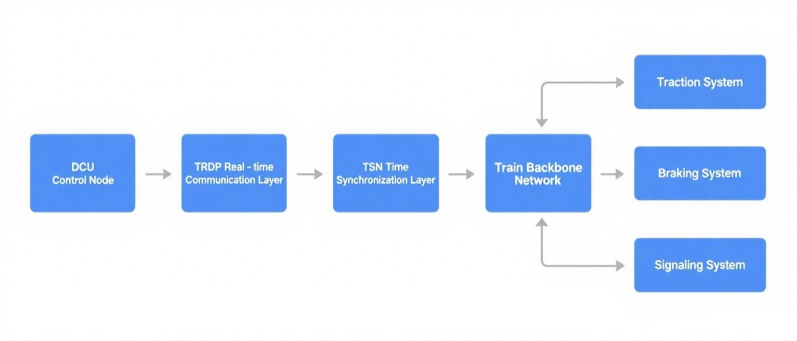
It realizes nanosecond-level time synchronization and intelligent traffic scheduling of the whole vehicle equipment, laying the foundation for Fully Automatic Operation (FAO).
3 Accelerated Advancement of Standardization and Ecosystem Construction
DCU+TRDP technology is transitioning from "pilot verification" to "large-scale application" — it is expected that by 2028, the TRDP penetration rate in intelligent door systems of newly built metro trains will exceed 70%, becoming the standard for rail transit intelligence.
Conclusion
The integration of DCU and TRDP protocol is not just a "1+1>2" at the technical level, but also a key leap in the rail transit industry from "equipment stacking" to "system intelligence". The new integration solution is accelerating the empowerment of the global rail transit intelligence process with its advantages of high reliability, high cost-effectiveness, and high scalability, leading to a new future of safe and efficient travel.


